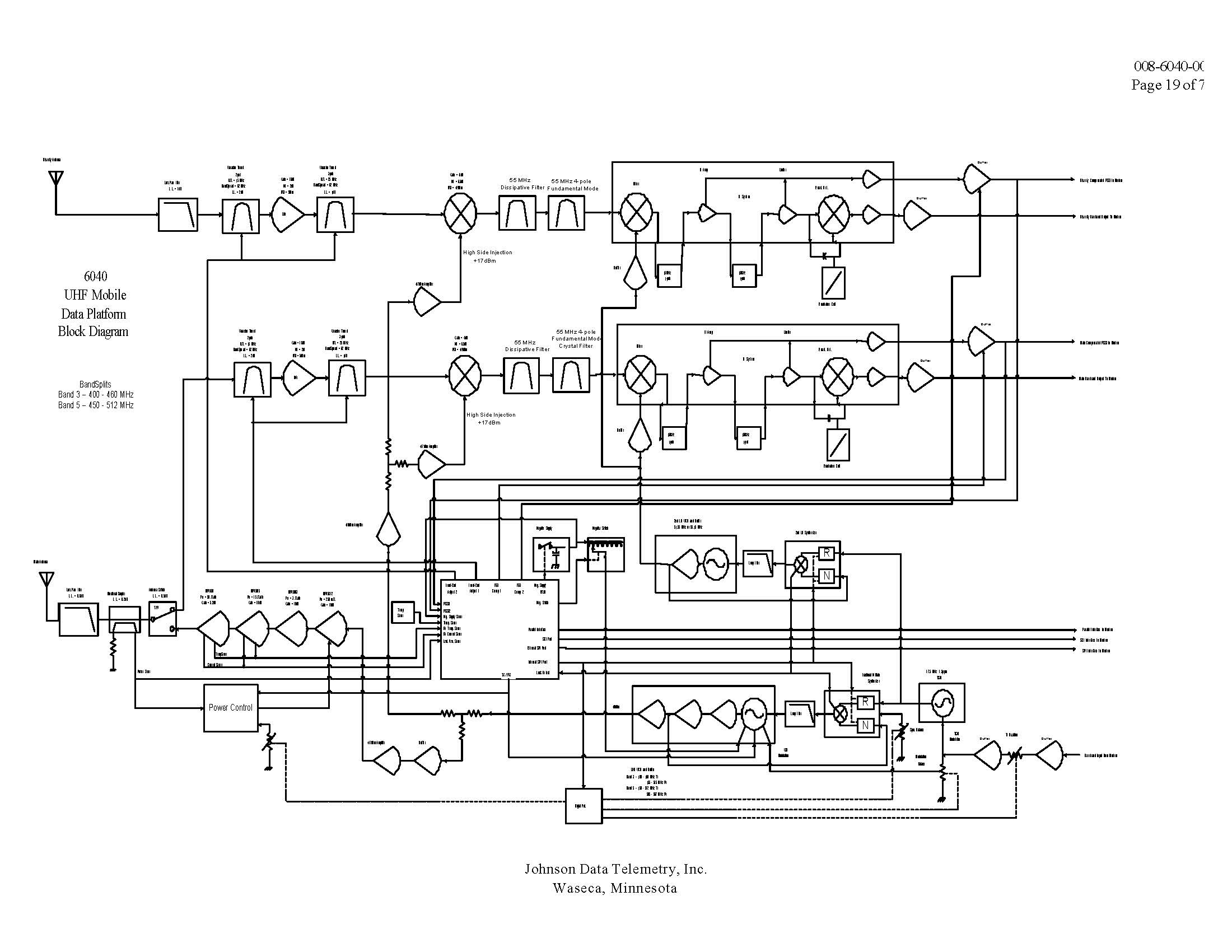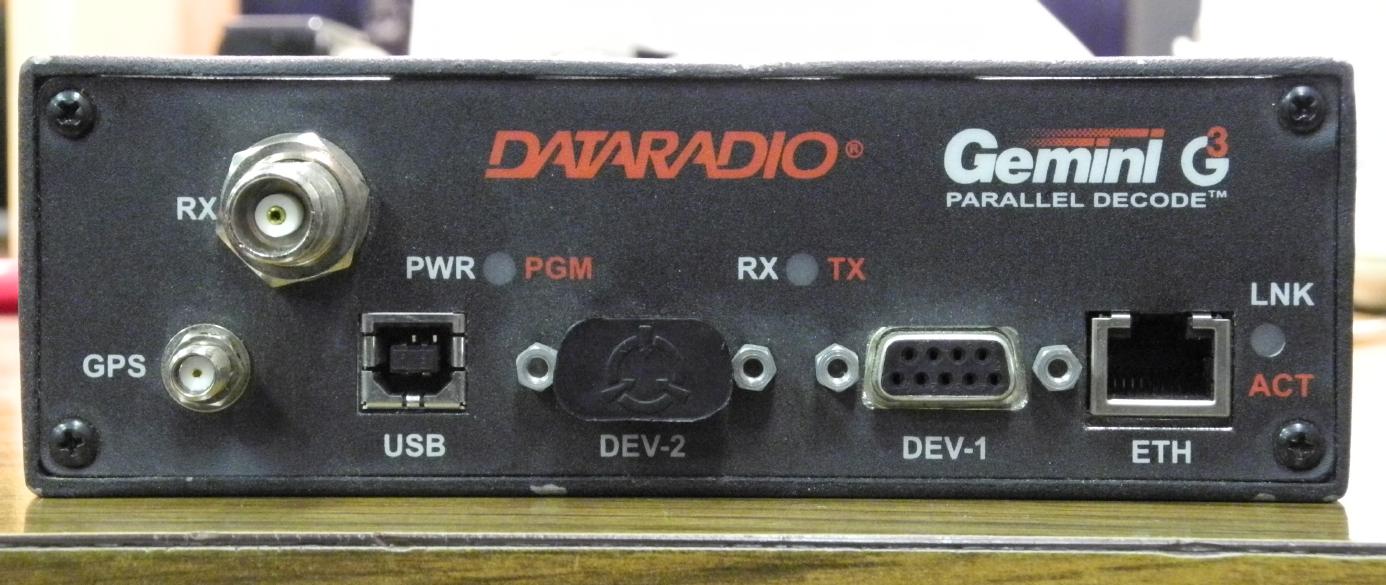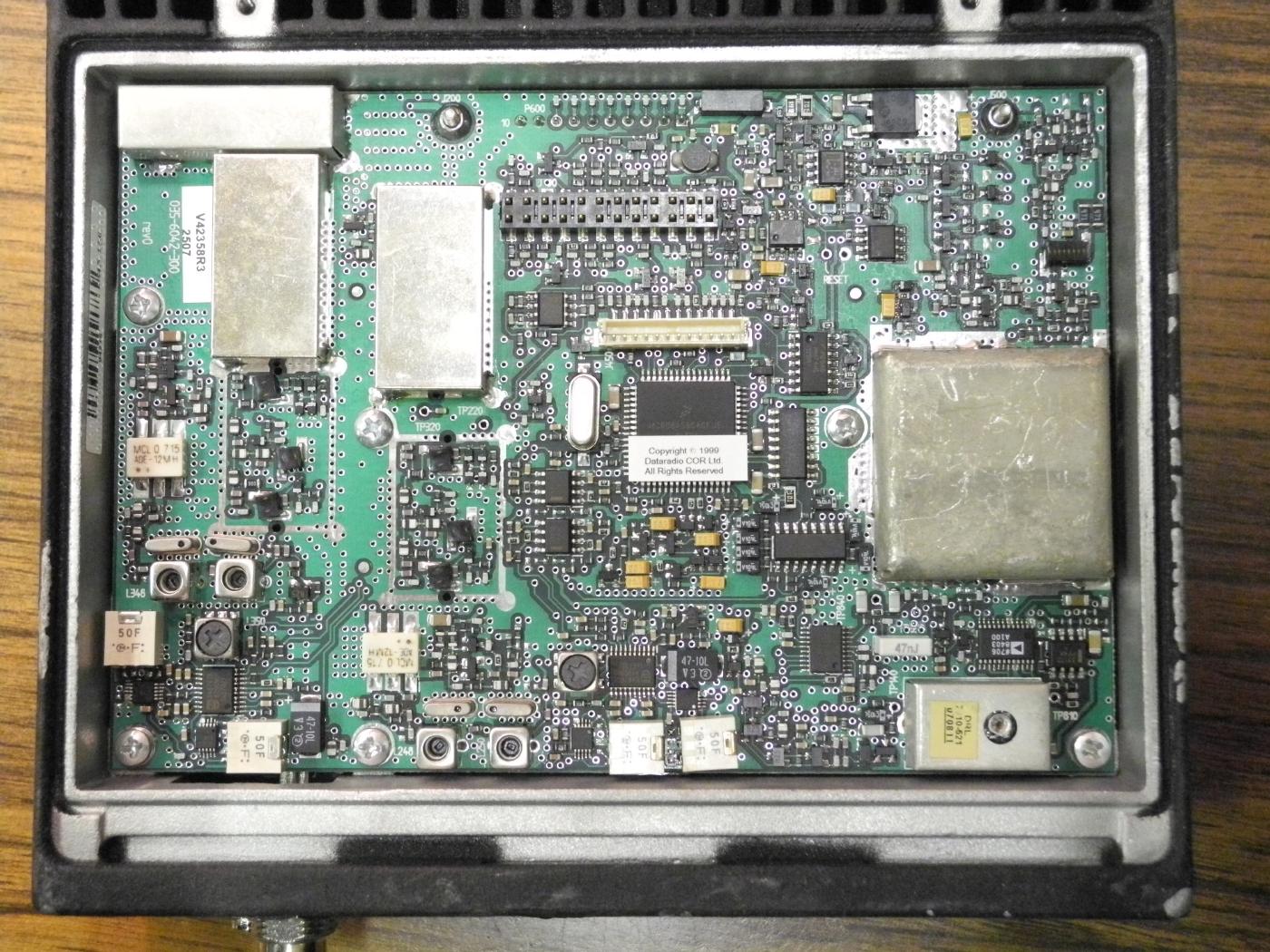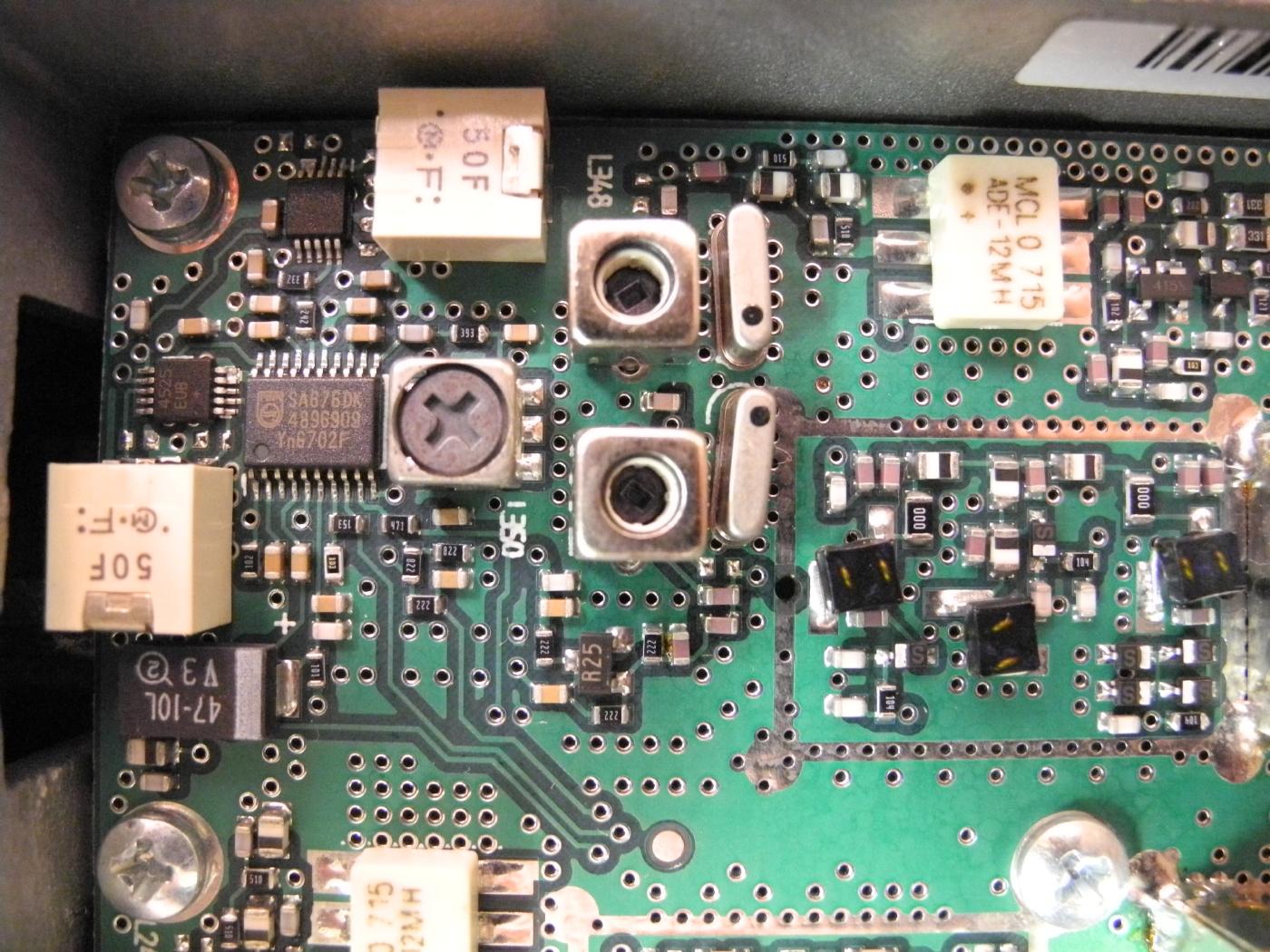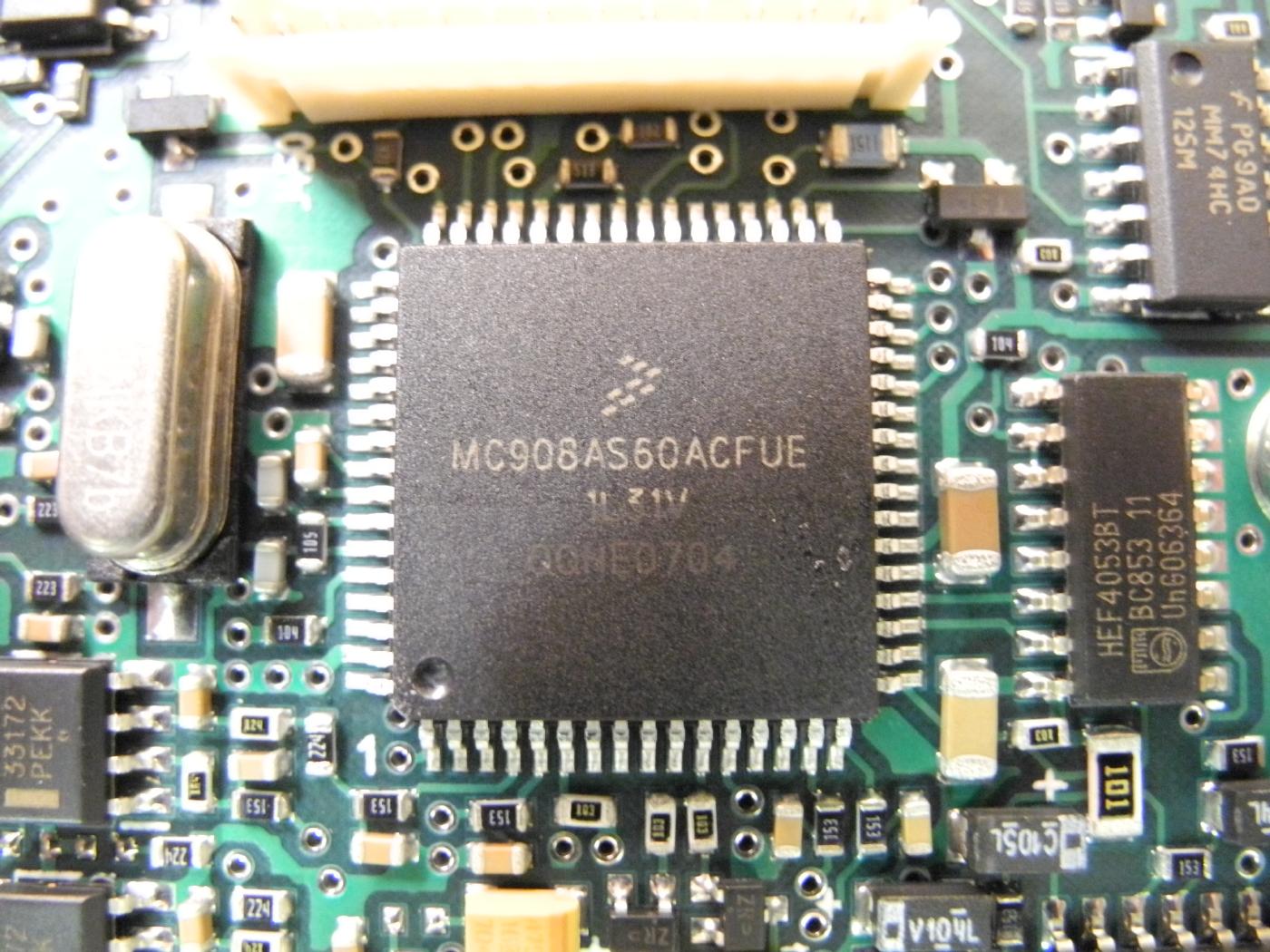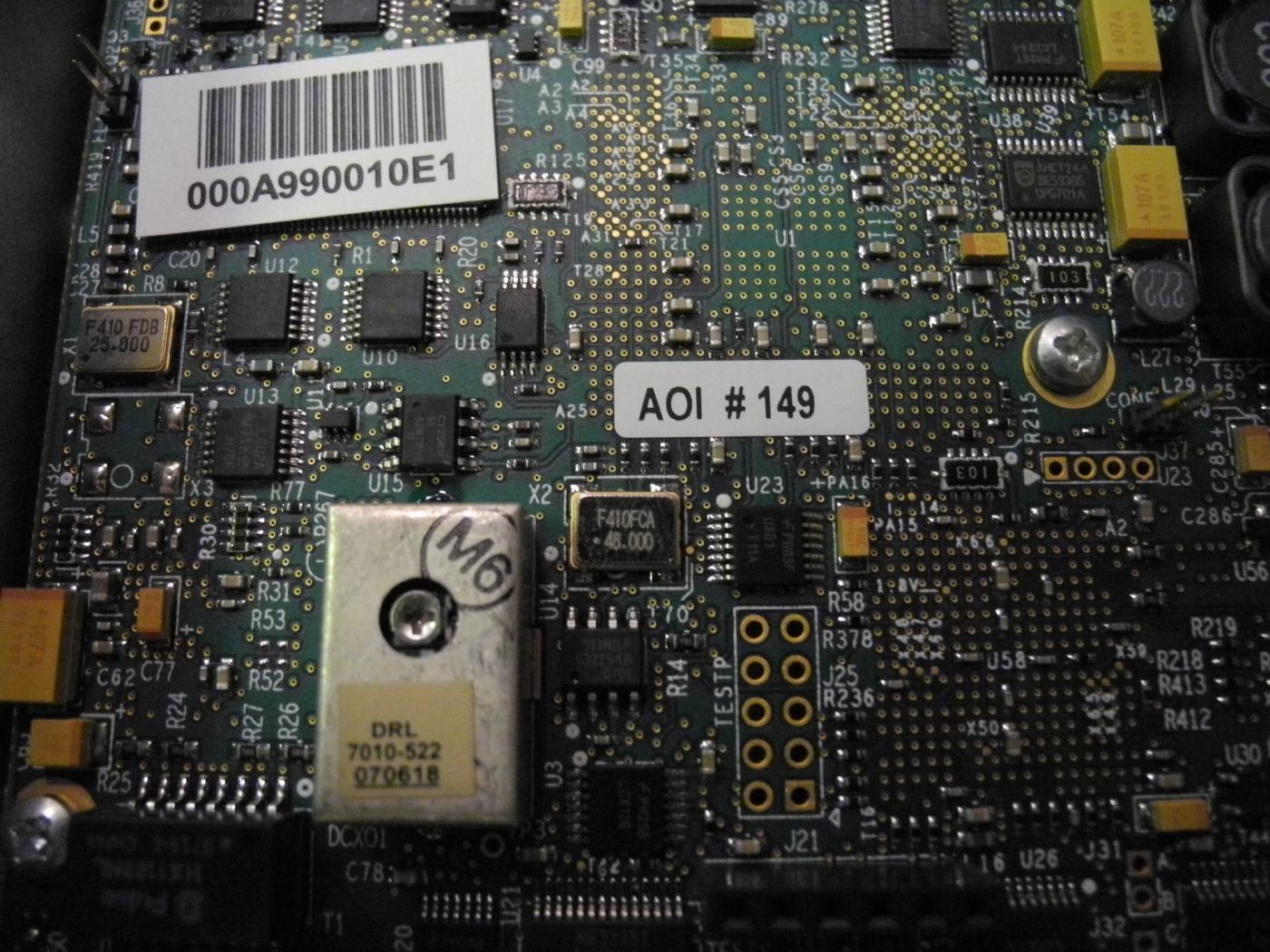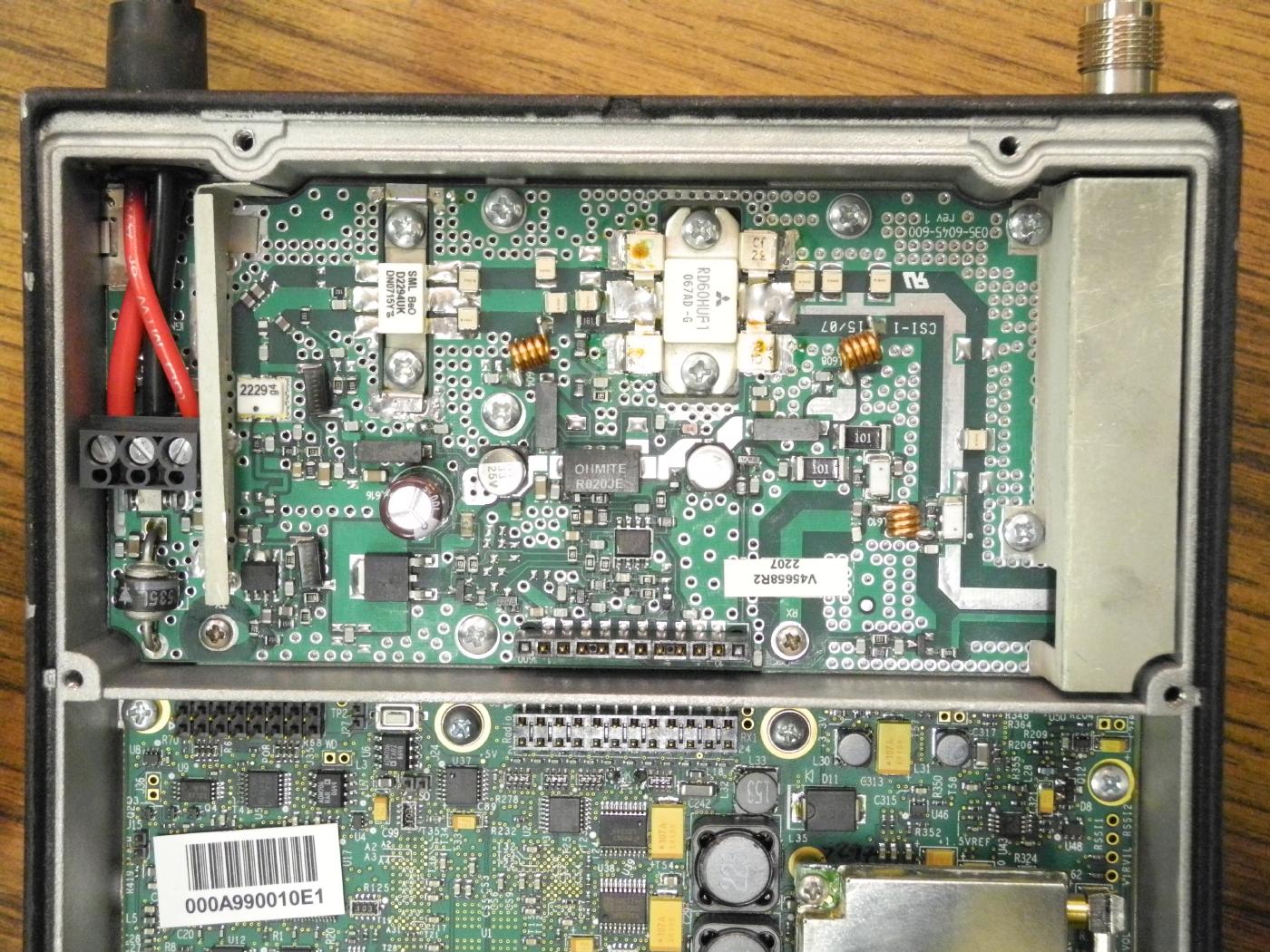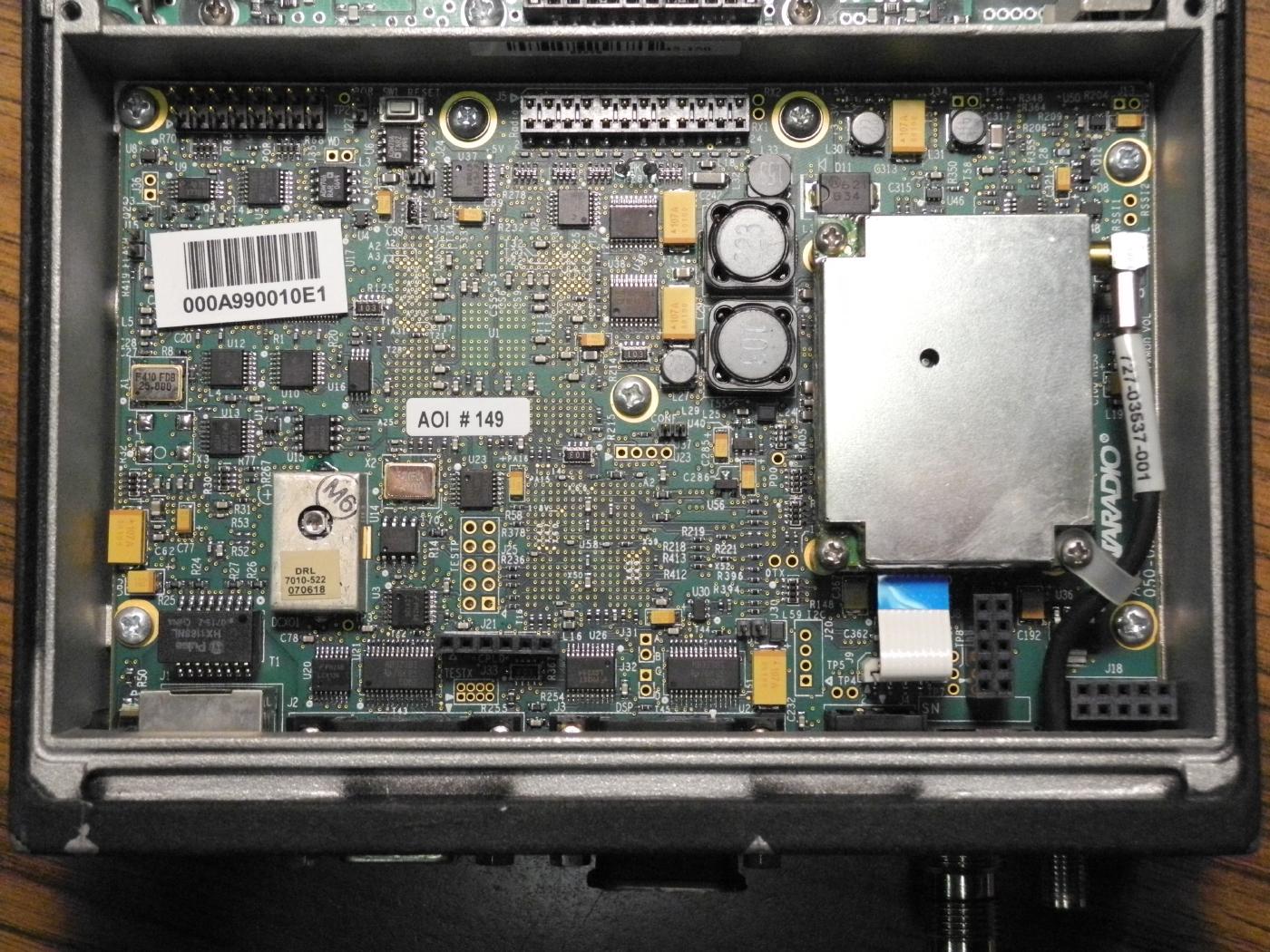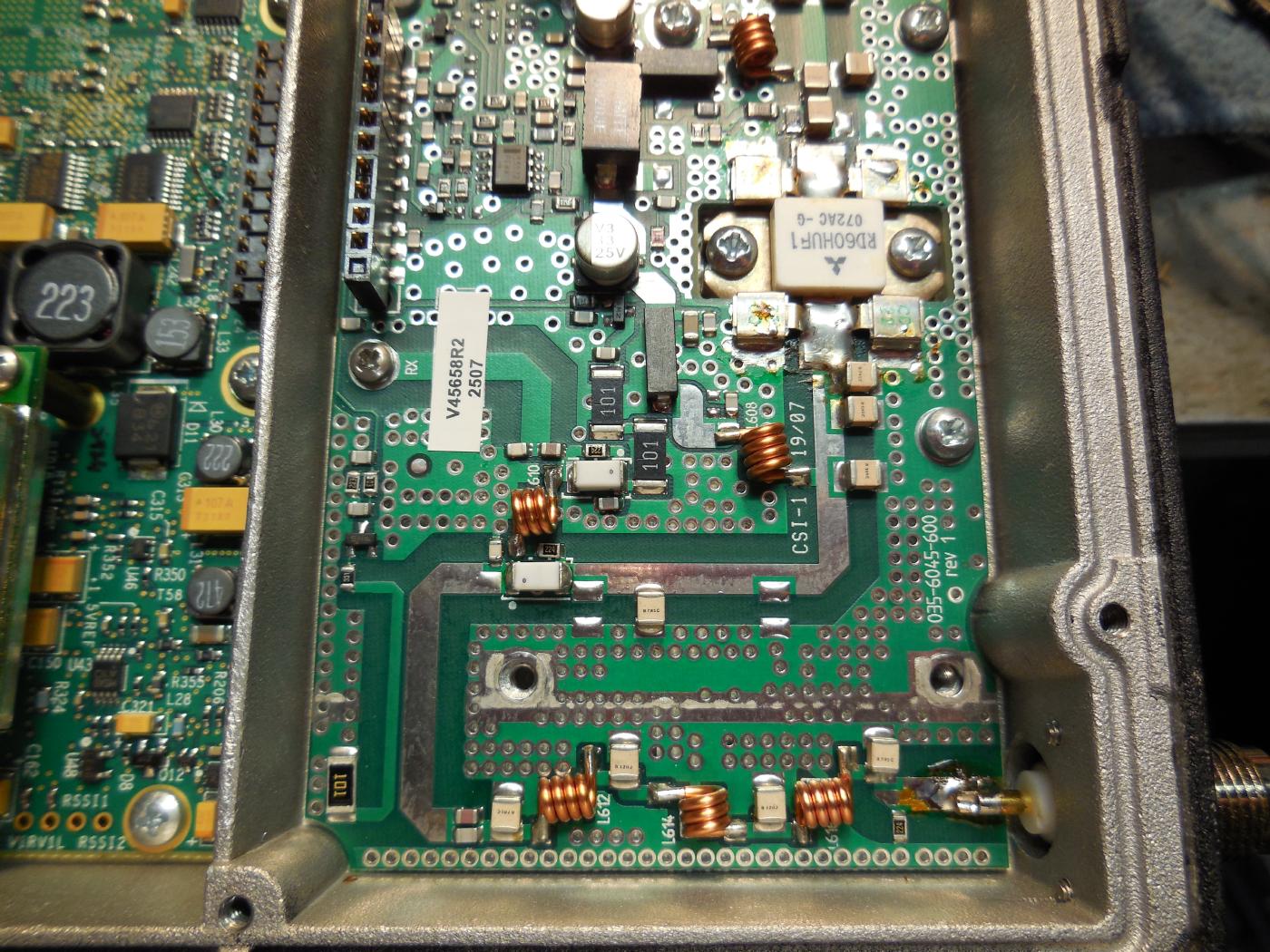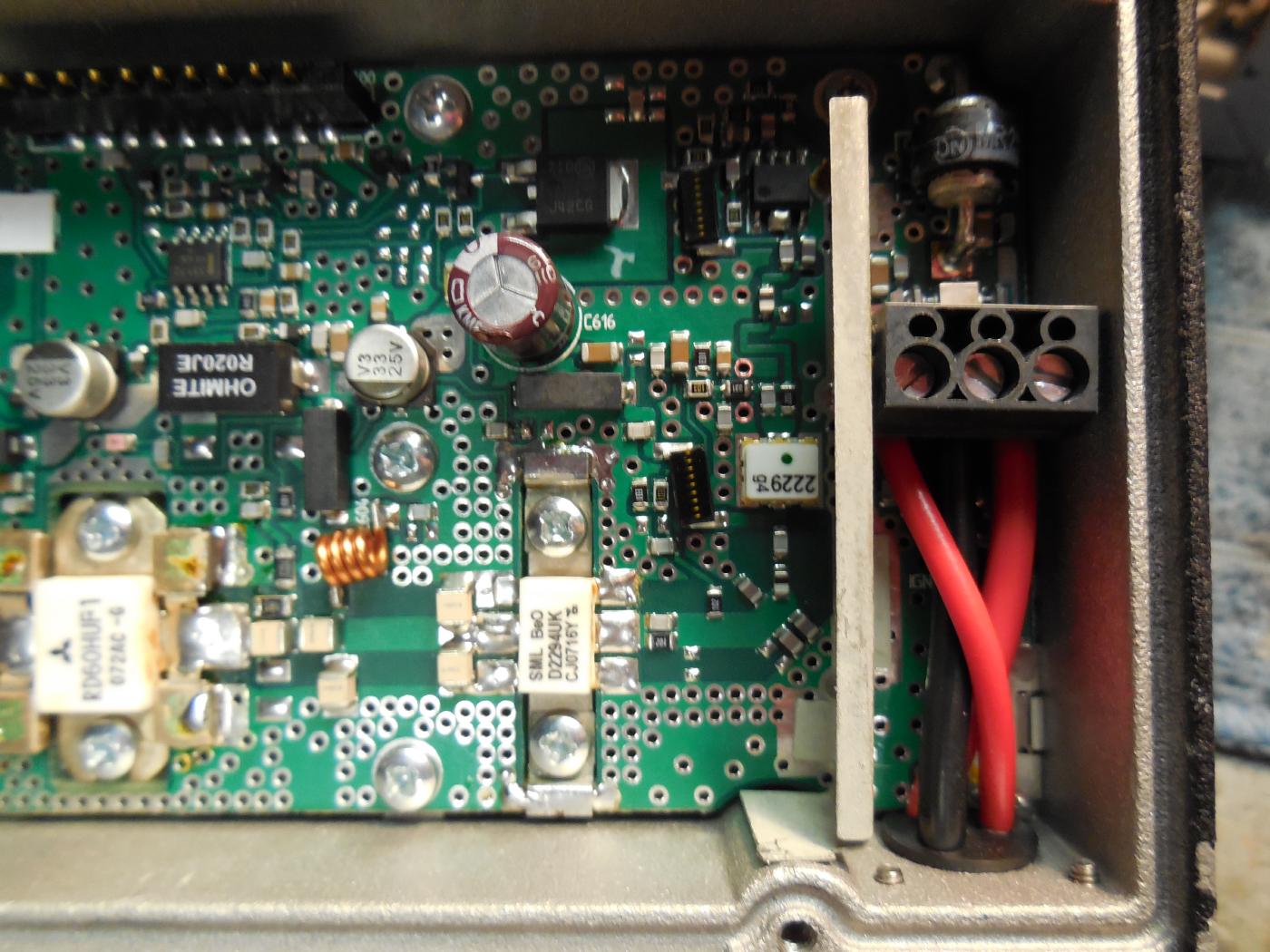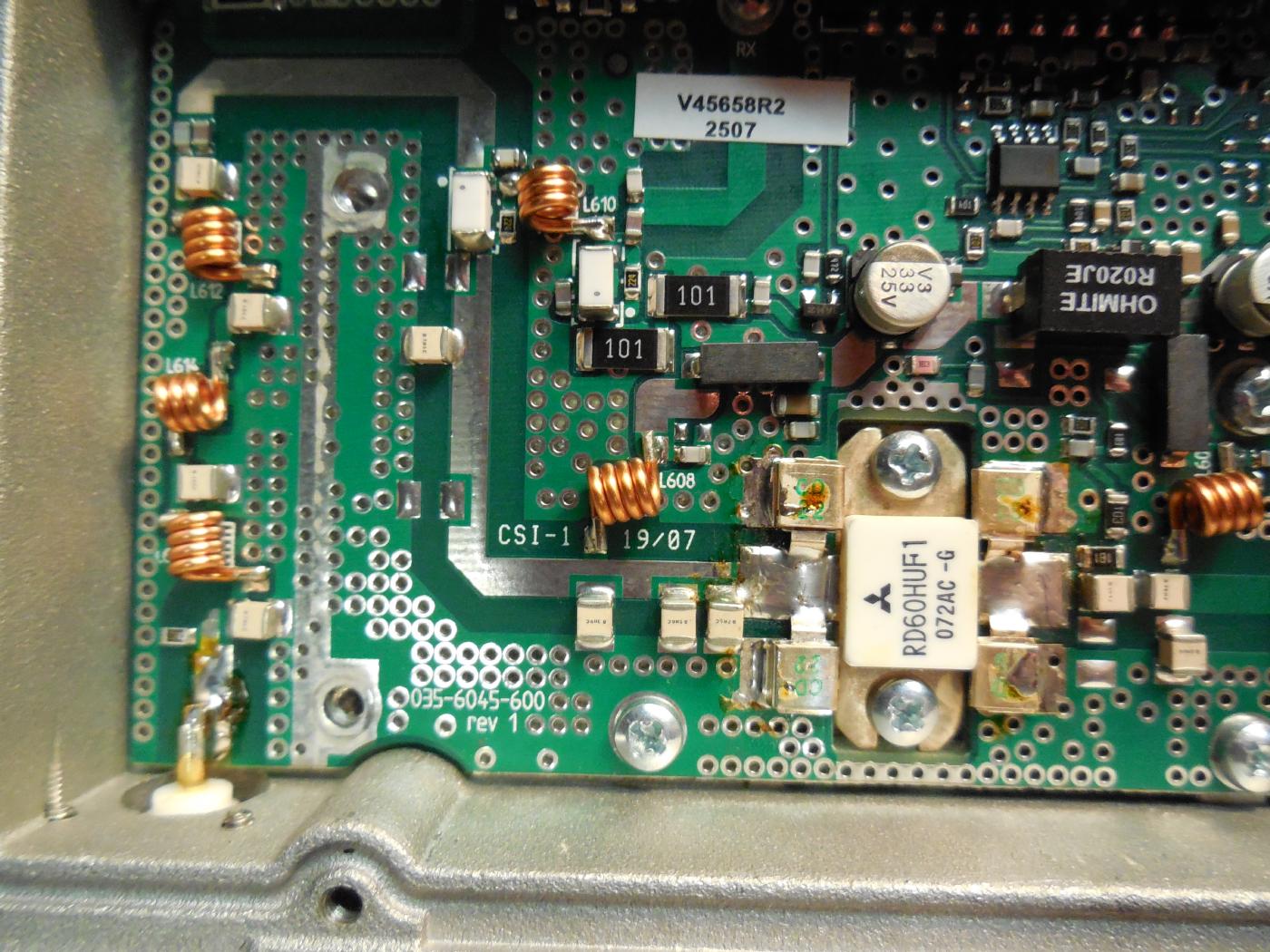The Dataradio Gemini G3 is a UHF (450-512 MHz) mobile radio modem housed in an aluminum cabinet and integrated Ethernet connection. It comprises a transceiver with a second space-diversity receiver, a variable 2-50 watt RF power amplifier, and a Gemini Control Unit (GCU). The modem used on the GCU is based around a Motorola DSP56303 Digital Signal Processor (DSP) operating at an oscillator frequency of 12.228 MHz. The main modem function is to convert the digital data into analog filtered waveforms used to modulate the transceiver with DGFSK (Differential Gaussian Frequency Shift Keying). The modulation scheme is either 2-level FSK (DGMSK), 4-level FSK (xRC4FSK), or 8-level FSK modulatio depending on the datarate.
The transceiver and the DSP modem interface uses five analog signals:
- XCVR_TXMOD (TXA, outgoing audio signal)
- XCVR_RX1 (RXA_1 incoming audio signal)
- XCVR_RX2 (RXA_2 incoming audio signal)
- CH0 (main receiver RSSI_1)
- CH1 (diversity receiver RSSI_2)
The transceiver and the diversity receiver audio incoming channels are processed by a PCM3002 CODEC using a sampling frequency of 48 kHz. It provides dual filtered audio bi-directional channels, with separate pairs of A/DD/ A converters The DSP modem circuit processes both Receivers RSSI signals from the transceiver using U12 (AD7811), a 10-bit serial A/D converter.
The latest certification EOTGPDA has been granted to Dataradio Inc on 12/04/2001 for its Gemini/PD radio modem. Gemini/PD is comprised of the Dataradio COR Ltd. (DRL) Mobile Data Platform (MDP) UHF (403 MHz-512MHz) Transceiver with the Dataradio Inc Gemini Modem. Dataradio Inc does the final assembly and markets the Gemini/PD unit. The certificate, comprising its several Class II permissive changes already underwent, has been granted for: - 8K60, 15K0 and 15K3F1D for respectively 9.6, 16.0 and 19.2kbps DGMSK Differential Gaussian Minimum Shift Keying digital modulation - 16K8,15K6,16K0, 8K17 and 8K67F1D for respectively 32.0, 25.6,19.2,16.0 and 14.4kbps xRC4FSK family of Raised Cosine 4-level Frequency Shift Keyinga
The Gemini modem generates 2-level Differential Gaussian Frequency Shift Keying (DGFSK) and 2n-level family Raised Cosine Frequency Shift Keying. (xRC nFSK). 2-level DGFSK and 4-level xRC has been granted with the certificate EOTGPDA. This measurement concerns only 8-level xRC (raised cosine family) modulation, its description follows. This digital modulation scheme is produced by the main CPU in conjunction with the DSP. The main CPU processes incoming binary data, applying Forward Error Correction (FEC), interleaving and scrambling, and from it generates an NRZ signal that is fed to the DSP processor for encoding and pulse shaping. The DSP processor assigns to every incoming group of three bits a symbol recorded in a level of frequency shift. The mapping follows a Gray scheme:100-highest positive frequency, 101-next highest positive, etc, to 000-lowest negative, resulting signal being a 8-DC level digital. This 8-level signaling transmits three information bits per symbol (baud) which yields a bit rate of three times the on-air baud rate, hence the 28.8 kbps references in the Installation Guide correspond to a transmitter baud rate of 9600 baud. That digital signal is digitally filtered (Squared Root or pure Raised Cosine pulse shaping with roll off factor 0.4) by the DSP then fed to the CODEC for digital to analogue conversion. This xRC8FSK wave shape applied to the FM modulator will then produce a compact RF spectrum, when using proper frequency deviation, to fit inside the restrictive masks inherent to the intended channel bandwidth. The transmitter deviation level and digital filter cutoff frequency (which is based on the raised cosine filter equation) are set according to the bit rate selected and channel bandwidth as shown in page 10.
The transmitter deviation level and digital filter cutoff frequency (which is based on the raised cosine filter equation) are set according to the bit rate selected and channel bandwidth as follows: Bit rate Baud rate Raised Cosine filter s 3dB cut-off frequency Deviation 48000 b/s 16000bauds 8.0 kHz � 5.1 kHz 43200 b/s 14400bauds 7.2kHz � 5.2 kHz 24000 b/s 8000bauds 4.0 kHz � 2.5 kHz 21600 b/s 7200bauds 3.6 kHz � 3.9 kHz
